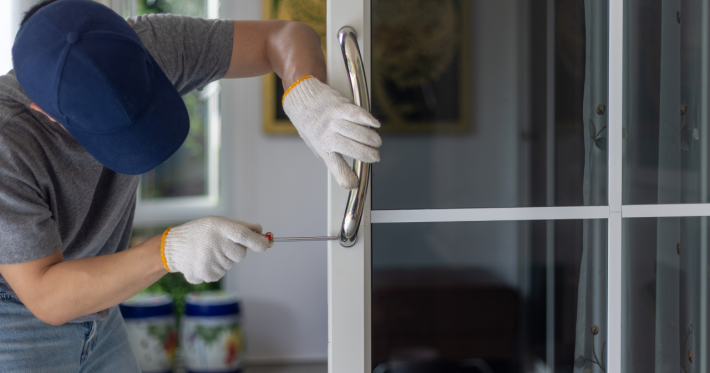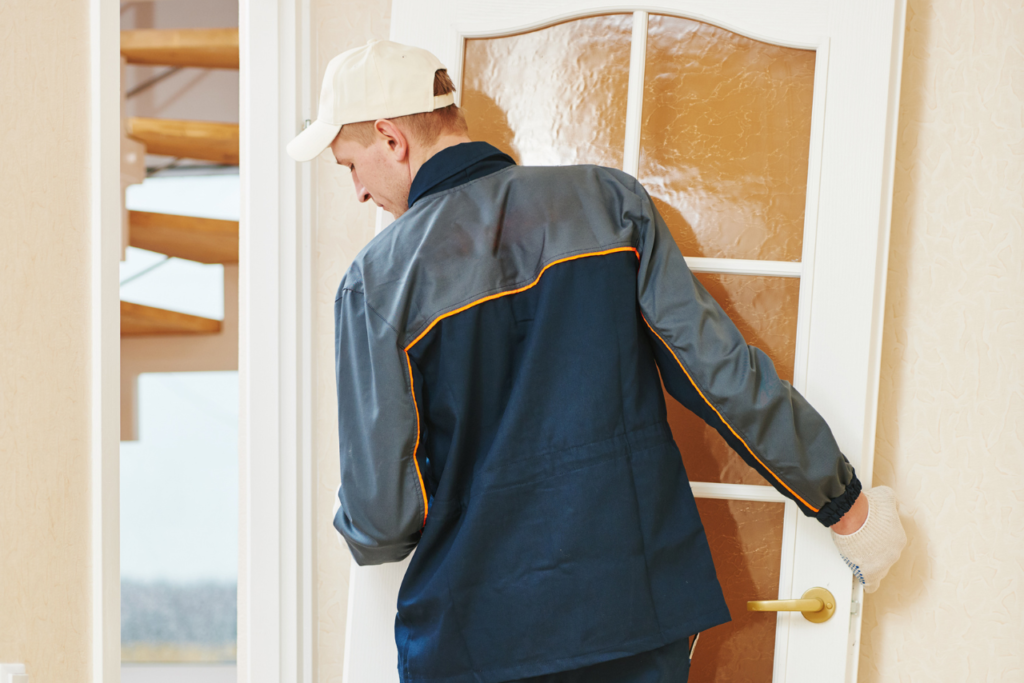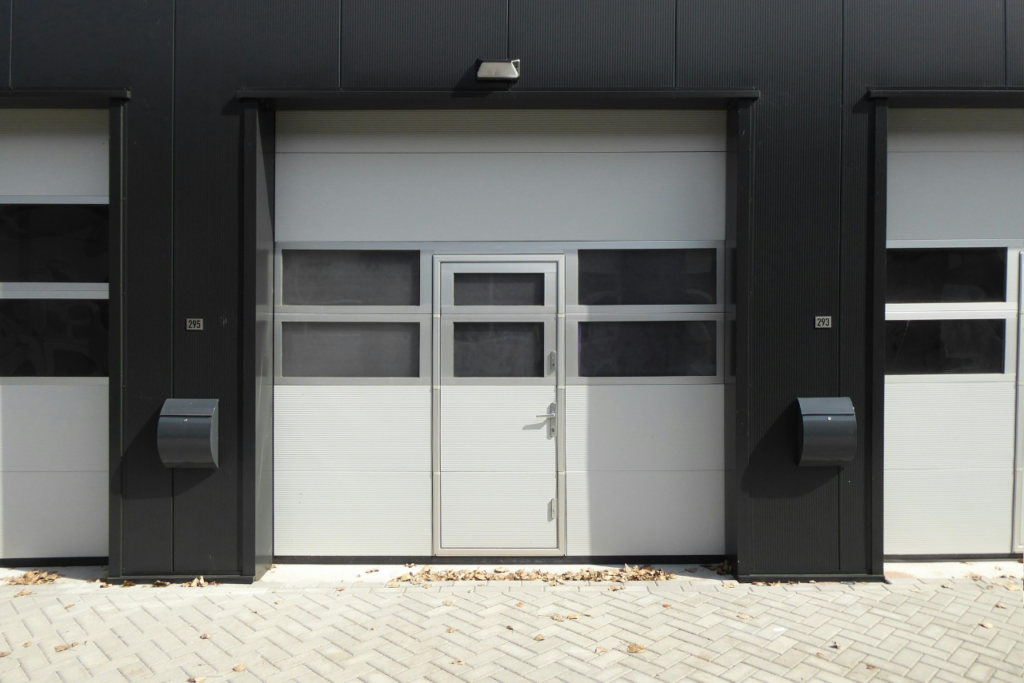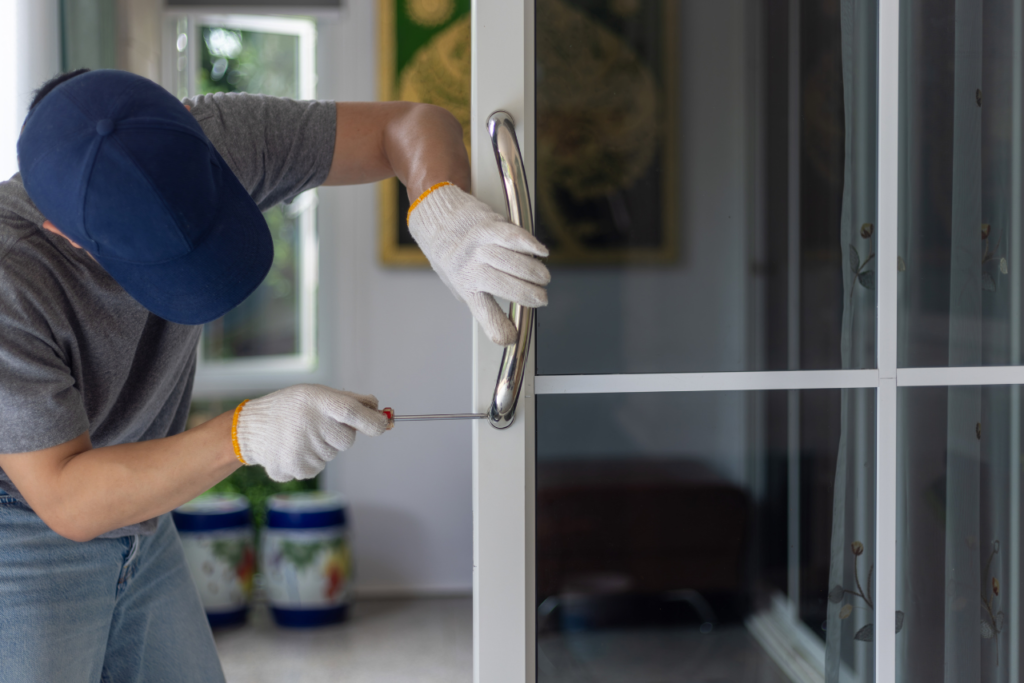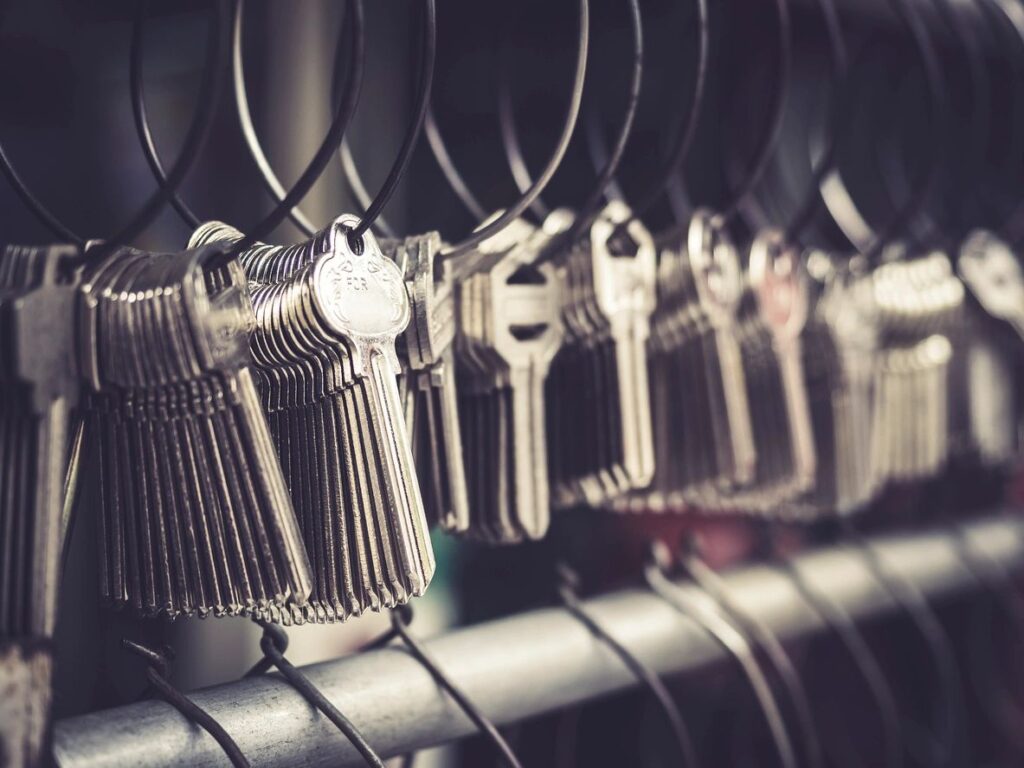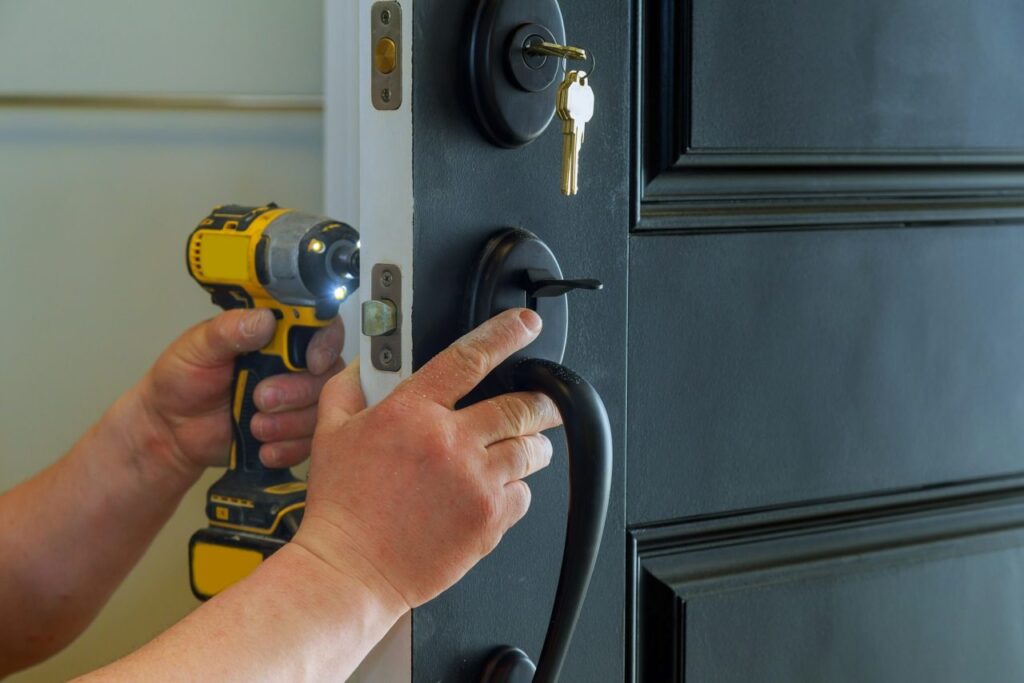Doors are not just functional fixtures in our homes and offices; they also play a significant role in securing our spaces and enhancing aesthetic appeal. Yet, they’re often overlooked when it comes to regular upkeep. Interestingly, something as simple as routine door maintenance can drastically extend a door’s lifespan, saving you money and hassle over time. Neglect leads to squeaky hinges, misaligned frames, peeling finishes, and eventually costly replacements. But proactive care can prevent these issues and keep your doors operating smoothly.
This guide explores how proper care can save your doors from premature wear and tear. By the end, you’ll know key maintenance techniques, tools to use, and signs to watch for that indicate trouble. Whether your doors are made from wood, metal, or composite materials, these tips will help ensure they remain durable and reliable for years.
Why is Door Maintenance Important?
Your doors face constant use, exposure to weather changes, and wear. Each time you open or close a door, its various components—from hinges to the locking mechanism—experience friction. Over time, this friction can take its toll, leading to gradual deterioration. Proper door maintenance is essential to keep your doors functional, safe, and visually pleasing.
Beyond functionality, doors impact a property’s energy efficiency. A well-sealed and maintained door helps keep indoor temperatures consistent by blocking drafts. Neglected doors, on the other hand, may develop gaps, allowing air to escape and increasing your heating or cooling bills.
With that context, let’s jump into some actionable steps to maintain your doors, starting with proper cleaning.
1. Regular Cleaning Keeps Doors in Top Condition
Cleaning may seem like a basic task, but it’s an important first step in door maintenance. Dirt buildup on door surfaces, hinges, and handles can impact both their appearance and performance. Fortunately, routine cleaning isn’t complicated.
Surface Cleaning
For wooden doors, use a soft cloth, mild soap, and water to clean surface grime. Ensure the cleaning solution is appropriate for wood to avoid damaging finishes. Be sure to wipe in the direction of the grain to preserve the texture. For metal doors, opt for a non-abrasive cleaner to prevent scratches or corrosion.
Composite and fiberglass doors generally require even less upkeep. A mix of water and a mild household cleaner is usually sufficient. However, don’t overlook the edges of the door where dust can accumulate unnoticed.
Cleaning Hinges and Hardware
Door hinges and hardware like knobs, locks, and handles often gather grease and dirt that can lead to sticking or corrosion. Use a damp cloth to wipe away grime, and consider applying a bit of lubricating oil, like WD-40, to keep these parts moving freely. Door maintenance focused on the hardware ensures seamless operation and prevents long-term issues.
Don’t Forget the Doorframe
Dust and grime do not limit themselves to just the door. The surrounding frame collects debris as well, which can lead to issues with alignment or gaps. Take a vacuum with a crevice attachment or a damp cloth to clean the frame and ensure no dirt gets trapped in the corners.
By incorporating these cleaning habits into your routine, you’ll lay a solid foundation for further maintenance.
2. Inspect and Repair Damage Promptly
Even with regular cleaning, doors experience wear over time. Early detection of problems is key to ensuring that minor issues don’t spiral into costly repairs.
Visible Signs of Damage
Inspect your doors every few months for telltale signs of wear and tear, including cracks, peeling paint, rotting wood, or rust. Wooden doors in particular are susceptible to environmental conditions like humidity, which can warp panels and impact fit. Address these issues quickly, as small cracks can allow moisture to seep in, leading to deeper rot or decay.
For metal doors, look for rust spots, which may weaken the structure if not dealt with promptly. Sand down any rust patches and apply a rust-preventative primer to avoid future corrosion.
Hardware Checks
Door hardware often bears the brunt of daily usage. During door maintenance inspections, check for loose hinges, wobbly handles, or locks that stick. Tighten screws or bolts and replace any hardware showing obvious wear. If locks are misaligned and difficult to turn, lubricate the internal mechanism or consult a locksmith for adjustments.
Door Alignment
Have you noticed your door sticking or failing to swing smoothly? This could indicate alignment issues caused by loose hinges or shifting frames. Adjust loose screws on the hinges or realign the frame where necessary. Ignoring alignment issues can lead to worse problems, such as sagging doors that may require complete replacement.
By being proactive with repairs, you can prevent what starts as a small issue from turning into a major headache down the road.
3. Maintain Weatherproofing for Energy Efficiency
Weatherproofing is a critical factor in door maintenance, especially for exterior doors that endure rain, humidity, and temperature fluctuations. Good sealing preserves your home’s insulation and safeguards your door against weather-related wear.
Inspect and Replace Weatherstripping
Weatherstripping is the material that seals the edges of your doors, preventing air drafts and moisture from entering. Over time, this material can wear out, peel, or crack. To check its condition, close the door and look for light seeping through the edges. If you perceive drafts, it’s likely time to replace the seal.
Fortunately, replacing weatherstripping is a straightforward task. Hardware stores carry pre-cut strips that can be installed with adhesive backing or screws. Ensure a snug and even fit to optimize energy efficiency.
Check Door Sweeps
The bottom of your door has a critical yet often ignored component called a door sweep. This strip prevents debris, water, and drafts from entering beneath the door. Sweeps can wear down with constant use, so inspect them regularly. If the sweep no longer makes contact with the floor, replace it to restore its insulating properties.
Apply a Fresh Coat of Paint or Sealant
Weatherproofing goes beyond seals and sweeps. Wooden doors, in particular, require periodic repainting or re-staining to protect them from water damage and UV exposure. A fresh coat of quality exterior paint or weatherproof sealant can shield the door from environmental stressors and maintain a polished appearance.
Prioritizing weatherproofing as part of your door maintenance routine pays off by reducing energy costs and slowing material degradation.
4. Lubrication for Smooth Functionality
Doors rely on multiple moving parts to operate efficiently. Without proper lubrication, hinges, lock mechanisms, and sliding tracks (for pocket or barn doors) can suffer from friction and wear.
Hinges
Squeaky or stiff hinges indicate that they’re not lubricated properly. Apply a silicone-based lubricant or a few drops of household oil to keep them operating quietly and smoothly. Be mindful not to over-lubricate, as excess grease can attract dust.
Lock Mechanisms
Locking mechanisms are delicate and prone to jamming over time. Apply graphite powder or a specialized lock lubricant to the keyholes to prevent sticking. Avoid using oil-based lubricants, as they can gum up the internal parts.
Sliding and Folding Door Tracks
For doors on tracks, such as sliding patio doors, clean out any dirt or debris lodged in the track. Vacuum the area and apply a silicone spray to help the door glide effortlessly. Maintaining tracks is one of the most overlooked yet vital aspects of door maintenance for sliding systems.
Regular lubrication reduces the effort required to operate your doors, extends the life of moving parts, and minimizes the risk of hardware failure.
5. Seasonal Maintenance Tips
Seasonal changes bring unique challenges for maintaining doors. Intense summer heat can cause wooden doors to swell, while winter’s cold can contract seals, leading to gaps and drafts. Adapting your door maintenance practices based on the time of year ensures optimal performance.
Summer Care
During the warmer months, check for swelling in wooden doors. Ensure your door still closes smoothly and sand down any areas that stick. High levels of humidity also call for more frequent checks of weatherstripping.
Fall Maintenance
This is a good time to prepare doors for harsh winters. Inspect all seals, lubricate hinges, and add a coat of weatherproof oil or paint to wooden doors. Consider replacing any compromised door sweeps before snow or rain becomes a problem.
Winter and Spring
During winter, be vigilant about clearing ice or snow buildup around your exterior doors to prevent rust and water damage. Spring brings milder weather, making it the ideal season for deeper inspections and repair tasks you may have postponed during colder months.
Adjusting your door maintenance routine each season goes a long way toward preserving their longevity and efficiency.
The Benefits of Routine Door Maintenance
Routine door maintenance doesn’t just save money; it also improves convenience, security, and aesthetics. A well-maintained door operates smoothly, keeping your daily life frictionless. It also adds curb appeal to your space, leaving a positive impression on guests or clients.
Additionally, a properly sealed and regularly cleaned door enhances your home’s insulation, reducing energy costs over time. On the security front, sturdy doors with intact locks bring peace of mind, especially when everything is in proper working condition.
Call Us for Professional Door Care Solutions
Maintaining your doors isn’t as daunting as it seems. By cleaning regularly, lubricating moving parts, repairing damage, and protecting against weather, you can add years to their lifespan. However, some tasks require professional expertise. If you need assistance inspecting, repairing, or updating your doors, we’re here to help.
Don’t wait until a minor issue turns into a major problem. Reach out to us today and ensure your doors stay functional, secure, and visually appealing for years to come. Contact us now to schedule a professional door maintenance service!

